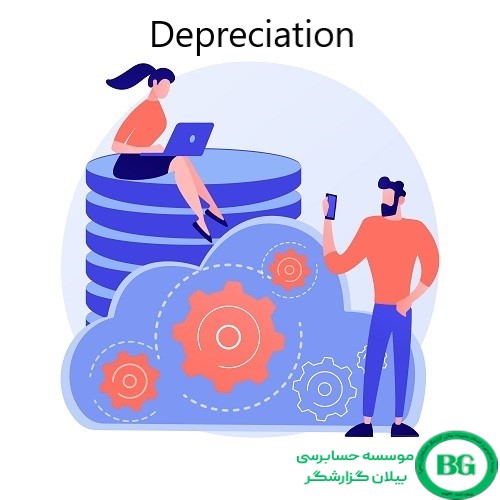Depreciation

Depreciation:
According to International Accounting Standard 16, property, machinery and equipment, depreciation is defined as (systematic specialization of the depreciable amount of an asset during its useful life) (paragraph 6)
In simple terms, depreciation divides the cost of the asset into the periods in which the asset is used.
Depreciation is the matching between the expenses of using a non-current asset and the income generated by that asset during its useful life.
Also, depreciation should be consistent with the pattern of asset use. According to International Accounting Standard 16, the estimated useful life of real estate, machinery and equipment should be checked regularly, and if the depreciation method does not match the way the asset is used, it should be be changed
This is realized by recording the annual depreciation expense, which has a double effect:
The value of non-current assets in the statement of financial position is reduced through accumulated depreciation to reflect the depreciation of the asset.
Depreciation expense is recorded as an expense in the income statement to match the income generated by the non-current asset.
More discussions about depreciation
Depreciation may be caused by:
Use
Damage and wear and tear
Elapse of time, for example, ten years of renting a property
Obsolescence and obsolescence in terms of technology and market changes, for example, machinery and equipment of a specialized nature
Extraction of natural resources, for example, extraction of minerals from mines
The purpose of depreciation is not to show the current value of the asset in the form of a financial statement, and also, its purpose is not to provide funds for the replacement of the asset.
Depreciation is a specialized method of costing the asset to the estimated periods of its use (useful life).
According to International Accounting Standard 16, land normally has an indefinite life and therefore does not need to be depreciated, but the building must be depreciated.
Depreciation of an asset begins when it is ready for use.
Depreciation calculation methods:
straight line:
The depreciation cost is the same every year and it is also assumed that the benefits are consumed equally.
Declining balance:
A decreasing amount is deducted from the depreciation each year and it is assumed that more interest is consumed in the early years.
It is useful for assets that contain more benefits such as cars, IT equipment.
It is stated in International Accounting Standard 16 (the depreciation method used for an asset should reflect the consumption pattern of the expected future economic benefits of the asset (paragraph 60).
Straight line method
Useful life/(residual value – cost price) = depreciation cost
On the other hand, it can be considered as a percentage of the cost price.
Residual value: The estimated disposal value of the asset at the end of its useful life.
Useful life: The estimated number of years that the business entity will use the asset.
The straight line method leads to the same cost and is used when the consumption pattern of an asset is constant during its life.
Normally, buildings are depreciated in this way because the business entity will have the same use of the building each year.
Declining balance method:
Book amount = %X x depreciation cost
Book amount: the initial cost of the non-current asset after deducting the accumulated depreciation of the asset to date
The declining balance method leads to a permanent reduction in depreciation cost over the life of the asset.
This method is used to reflect the expectation that the use of the asset becomes less and less as its age increases.
This method is used to depreciate vehicles that are expected to provide less service to the business unit with the increase in age and mileage and due to the increasing need for repairs.









